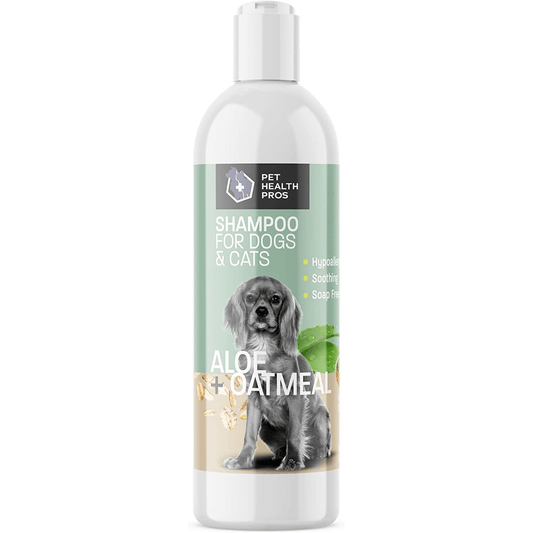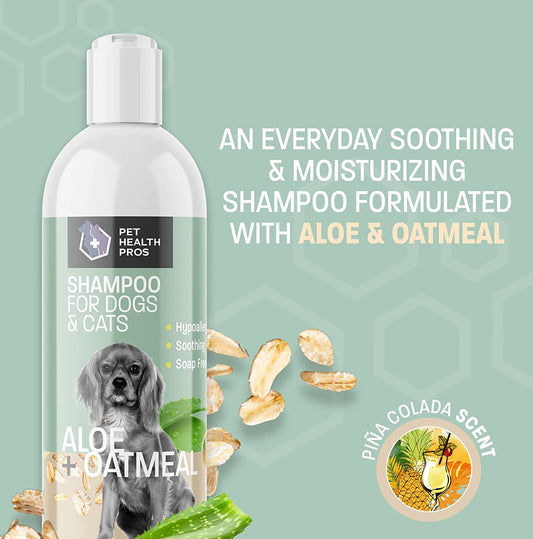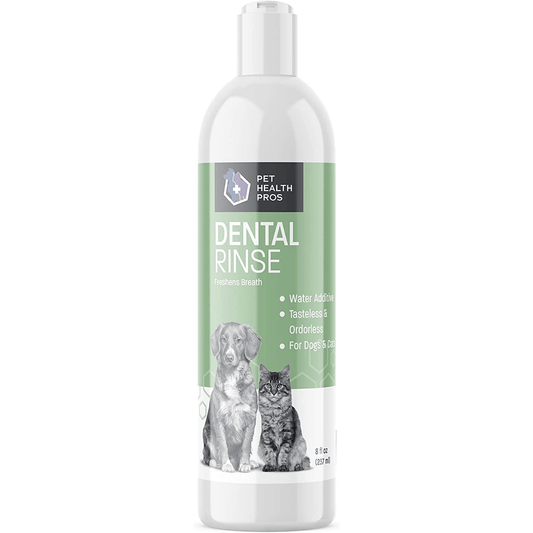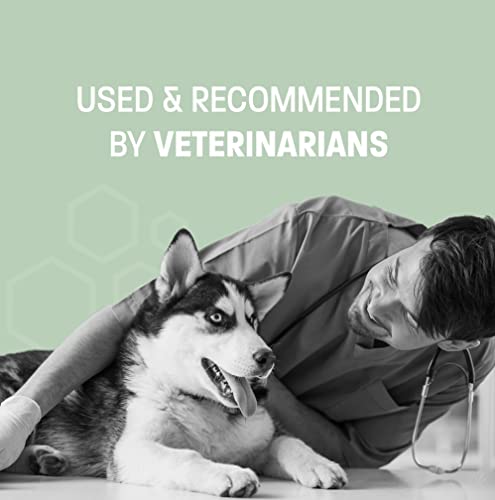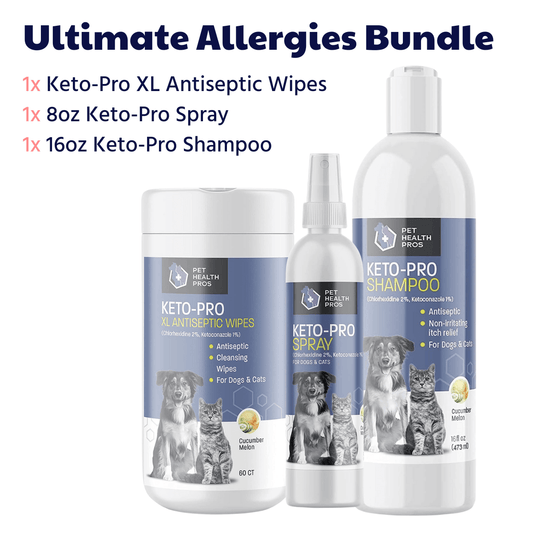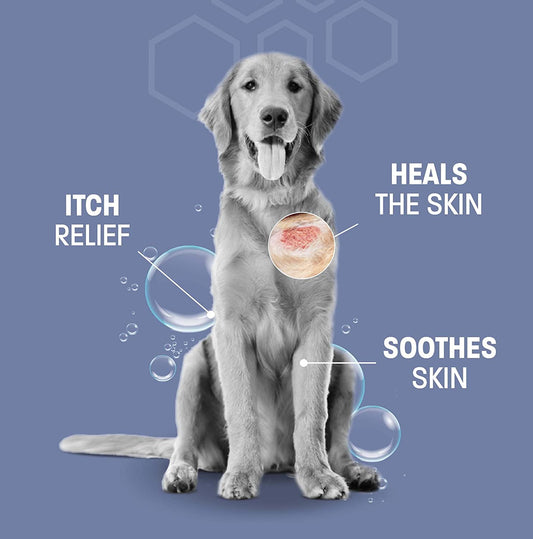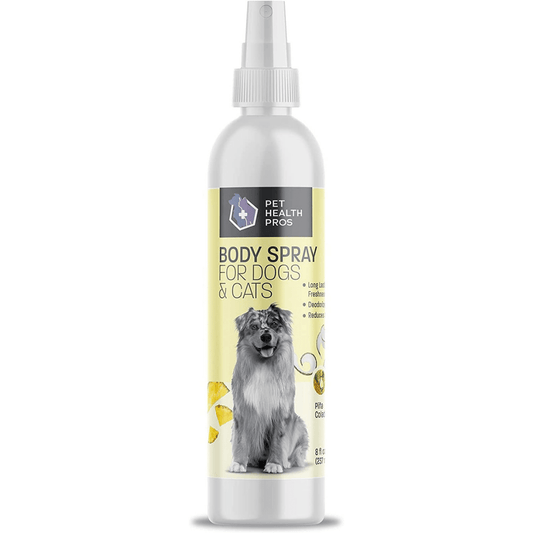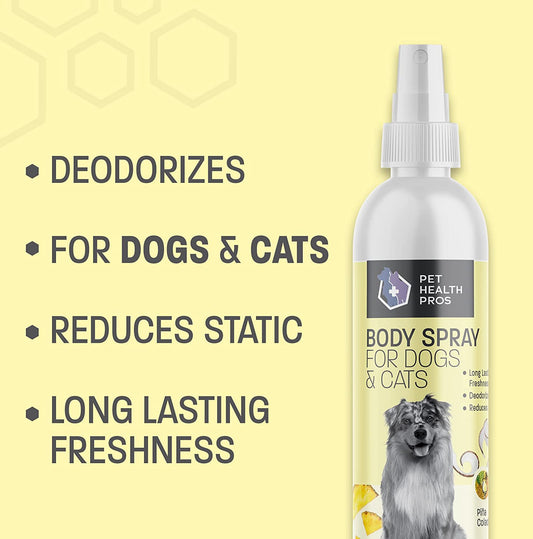Hot spots on dogs can be a real pain, both for the pet and the owner. These red, itchy, and inflamed areas on a dog's skin can cause a lot of discomfort. Knowing how to use hot spot spray correctly can make a big difference in your dog's recovery. This guide will teach you everything you need to know about using hot spot spray for dogs.
Key Takeaways
- Hot spots are painful and itchy areas on a dog's skin that need quick attention.
- Choosing the right hot spot spray involves looking at the ingredients and types available.
- Proper application of the spray includes preparing your dog and following a step-by-step guide.
- Preventing hot spots involves good hygiene, a balanced diet, and regular vet visits.
- Professional help is needed if hot spots are severe or if there are complications.
Understanding Hot Spots in Dogs
Causes of Hot Spots
Hot spots in dogs, also known as acute moist dermatitis, are often caused by excessive licking, scratching, or biting of the skin. These behaviors can be triggered by various factors such as allergies, insect bites, poor grooming, or underlying skin infections. Identifying the root cause is crucial for effective treatment and prevention.
Symptoms to Watch For
Common symptoms of hot spots include red, inflamed skin, hair loss, and oozing sores. Dogs may also exhibit signs of discomfort, such as constant scratching or licking of the affected area. If you notice any of these symptoms, it's important to take action quickly to prevent the condition from worsening.
Common Breeds Affected
While hot spots can affect any breed, some are more prone to this condition. Breeds with thick coats, such as Golden Retrievers, German Shepherds, and Labradors, are particularly susceptible. Additionally, dogs with allergies or sensitive skin are at a higher risk. Regular grooming and monitoring can help manage and prevent hot spots in these breeds.
Choosing the Right Hot Spot Spray for Dogs
Ingredients to Look For
When selecting a hot spot spray for your dog, it's important to check the ingredients. Look for sprays that contain soothing agents like aloe vera and chamomile. These ingredients help to calm irritated skin and promote healing. Avoid sprays with harsh chemicals that could further irritate your dog's skin.
Types of Hot Spot Sprays
There are various types of hot spot sprays available, each designed for different needs. Some sprays are formulated specifically for dogs with allergies, offering benefits like soothing skin, reducing itching, and preventing infections. Others may contain antiseptic properties to prevent bacterial infections. Choose a spray that best suits your dog's specific condition.
Consulting Your Veterinarian
Before using any hot spot spray, it's always a good idea to consult your veterinarian. They can recommend the most suitable product for your dog's needs and ensure that it won't interfere with any other treatments your dog may be receiving. Your vet can also provide guidance on how to use the spray effectively and safely.
Consulting your vet ensures that you are making the best choice for your dog's health and well-being.
How to Apply Hot Spot Spray Effectively
Preparing Your Dog
Before you start, make sure your dog is calm and comfortable. It's important to never leave your dog alone during this process. Gather all the necessary items like the hot spot spray, a clean cloth, and treats to reward your dog.
Step-by-Step Application Guide
- Clean the affected area: Use a mild soap and water to gently clean the hot spot. Pat it dry with a clean cloth.
- Apply the spray: Hold the spray bottle a few inches away from the hot spot and apply a light mist. Avoid spraying directly into any open wounds.
- Let it dry: Allow the spray to air dry. Do not cover the area with bandages unless advised by your vet.
- Reward your dog: Give your dog a treat to make the experience positive.
Post-Application Care
After applying the spray, keep an eye on the hot spot. Make sure your dog doesn't lick or scratch the area. If you notice any signs of irritation or if the hot spot doesn't improve, consult your veterinarian.
Regular monitoring and quick action can help your dog heal faster and prevent further complications.
Preventing Hot Spots in Dogs
Maintaining Proper Hygiene
Keeping your dog clean is key to preventing hot spots. Regular baths and grooming help remove dirt and bacteria that can cause skin issues. Make sure to dry your dog thoroughly after baths, as moisture can lead to hot spots.
Diet and Nutrition Tips
A balanced diet is essential for your dog's skin health. Feeding your dog high-quality food with the right nutrients can strengthen their immune system and skin barrier. Consider adding supplements like omega-3 fatty acids to their diet for extra skin support.
Regular Vet Check-Ups
Routine vet visits are crucial for catching skin problems early. Your vet can spot potential issues before they become severe. Regular check-ups also ensure your dog is up-to-date on vaccinations and parasite prevention, which can help stop hot spots from developing.
Tip: Learn about effective anti-chew sprays, usage tips, limitations, and new laws to stop your dog from chewing and causing skin damage.
When to Seek Professional Help
Signs of Severe Hot Spots
If your dog's hot spot is not improving after a few days of home treatment, it might be time to see a vet. Severe hot spots can cause extreme discomfort and pain for your dog. Look for signs like excessive redness, swelling, or pus. If your dog is constantly scratching or licking the area, it could be a sign that the hot spot is getting worse.
Possible Complications
Hot spots can lead to more serious issues if not treated properly. Infections can spread to other parts of the body, causing more pain and discomfort. Your dog might also develop a fever or lose their appetite. In some cases, untreated hot spots can lead to deeper skin infections or even abscesses.
Treatment Options
When you visit the vet, they will likely clean the hot spot and may prescribe antibiotics or anti-inflammatory medications. They might also recommend a special shampoo or spray to help heal the area. In severe cases, your dog might need to wear an Elizabethan collar to prevent further irritation. Always follow your vet's advice for the best results.
If you're unsure about the severity of your dog's hot spot, it's always better to consult a professional. Early treatment can prevent complications and help your dog heal faster.
Alternative Treatments for Hot Spots
Natural Remedies
Natural remedies can be a gentle way to treat hot spots on dogs. Aloe vera is often used for its soothing properties. You can apply a small amount directly to the affected area. Another option is coconut oil, which has antibacterial and antifungal properties. Simply rub a bit on the hot spot to help it heal.
Over-the-Counter Solutions
There are several over-the-counter solutions available for treating hot spots. Hydrocortisone creams can reduce itching and inflammation. Antiseptic sprays are also useful for cleaning the area and preventing infection. Always read the label to ensure the product is safe for dogs.
Prescription Medications
In some cases, your veterinarian may prescribe medications to treat severe hot spots. These can include antibiotics to fight infection or stronger anti-inflammatory drugs. It's important to follow the vet's instructions carefully to ensure your dog recovers quickly.
If natural remedies and over-the-counter solutions don't work, consult your vet for stronger treatments. Prescription medications might be necessary for severe cases.
Understanding the Role of Allergies in Hot Spots
Allergies can play a big part in causing hot spots on dogs. When a dog has an allergy, their skin can get very itchy. This itching can lead to scratching, which can then cause hot spots. Identifying the cause of the allergy is important to stop the cycle of itching and scratching.
Identifying Allergens
Dogs can be allergic to many things, like pollen, dust, or certain foods. To find out what your dog is allergic to, you might need to do some tests. Your vet can help you with this. Once you know what your dog is allergic to, you can try to keep them away from those things.
Managing Allergies
Managing your dog's allergies can help prevent hot spots. This might include giving them special food, using allergy medicines, or keeping your home clean. Sometimes, simple changes can make a big difference.
Long-Term Allergy Solutions
For long-term relief, you might need to look at more permanent solutions. This could include allergy shots or other treatments suggested by your vet. The goal is to keep your dog comfortable and free from hot spots.
Remember, allergy relief for dogs is not just about treating the symptoms but also about finding and managing the cause. This guide covers top allergy medicines, symptoms, management, and FAQs for dog allergies.
Allergies can be a big problem for pets, often leading to hot spots that cause a lot of discomfort. Understanding how allergies contribute to these issues is key to keeping your furry friend happy and healthy. For more tips and solutions, visit our website and explore our range of pet care products.
Conclusion
Using hot spot spray for your dog can be a simple and effective way to treat their skin issues. By following the steps outlined in this guide, you can help your furry friend feel better quickly. Always remember to check the ingredients and consult your vet if you have any concerns. With the right care and attention, your dog will be back to their happy, healthy self in no time. Keep this guide handy for future reference, and you'll be well-prepared to handle any hot spots that come your way.
Frequently Asked Questions
What are hot spots on dogs?
Hot spots are red, irritated areas on a dog's skin that can be very itchy and painful. They often appear suddenly and can grow quickly.
What causes hot spots in dogs?
Hot spots can be caused by many things, like allergies, insect bites, poor grooming, or even boredom and stress.
How can I tell if my dog has a hot spot?
Look for red, wet, and irritated patches of skin. Your dog might scratch, lick, or bite the area a lot.
Can I use human medication on my dog's hot spot?
No, it's best to use products made for dogs. Human medications can be harmful to pets.
How often should I apply hot spot spray?
Follow the directions on the spray bottle or ask your vet. Usually, you apply it a few times a day until the hot spot gets better.
When should I take my dog to the vet for a hot spot?
If the hot spot is very large, not getting better, or your dog is in a lot of pain, it's time to see the vet.


